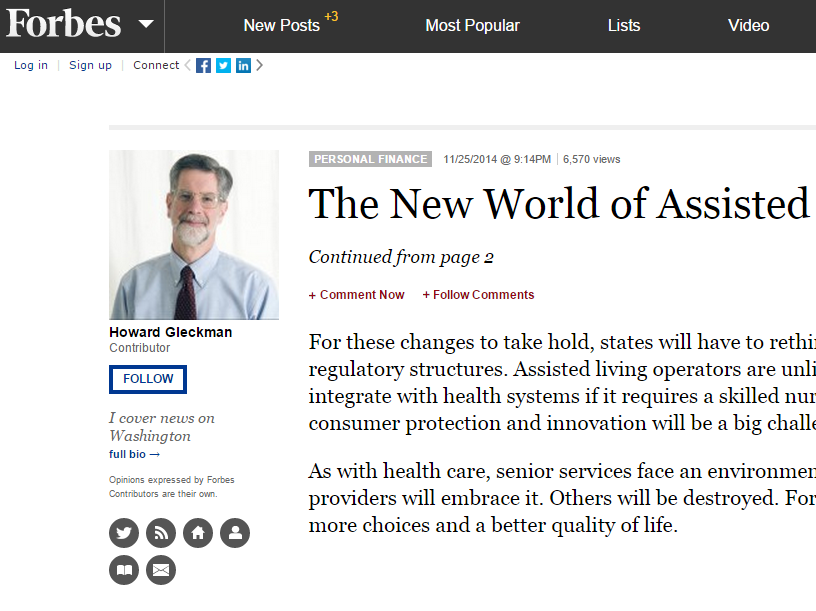Forbes contributor Howard Gleckman recently published an article that covered the challenges facing assisted living facilities (ALFs) around the country in the next few years. ALFs will have to respond to the demands of their customers, who largely have a negative view of care institutions. Many seniors tend to compare ALFs with the dreaded “home”, and are quick to associate these facilities with nursing homes, which usually have less than favorable reputations among Americans.
Gleckman estimates that, due to the rising cost of long term care, these facilities will have to increase their rates, which will drive out smaller facilities and promote the growth of larger operators. ALFs are also being pressured to provide more medical (rather than social) services to their residents, and Gleckman surmises that this will inevitably push operators toward more partnerships with medical providers and insurance networks. Many facilities are already providing these medical services (such as medication management), but they are not always cost effective for residents, and changes will likely have to be made to keep this business model viable for operators.
Given that ALFs are a relatively new type of long term care solution, it is not surprising that they will be forced to adapt quickly to the needs of America’s aging population. Seniors are demanding more personalized care, higher quality environments and entertainment, and greater support services for their medical needs. Right now, ALFs are regulated by each individual state, which means that standards vary widely across America. It is likely that regulators will have to come up with a more broad solution to address the problems and challenges in this industry.
If you or a family member have had experience with an ALF, you may have already noticed changes in the quality, cost, or availability of care in your own situation. It looks like those changes are only the first of many to come in the next few years, so don’t get too comfortable! The number of available ALF facilities and vacancies for residents will decline in the coming years, both due to the increasing number of aging citizens and the rising cost of health care. This will force many families to contribute their own time, effort, and funds toward caring for their family members. Be prepared to handle what is on the horizon for your long term care options.
Click on the image below to read the Forbes article and learn more about what is in store for assisted living facilities:
